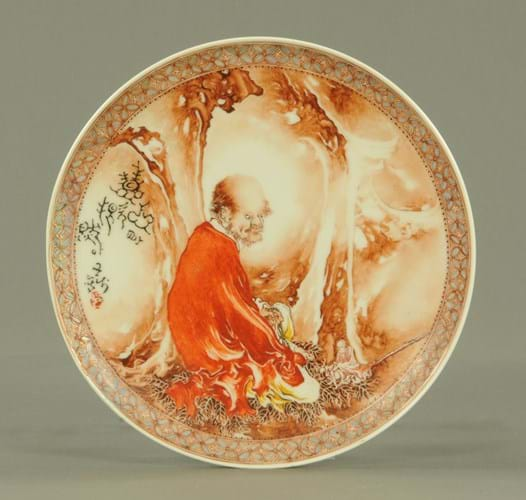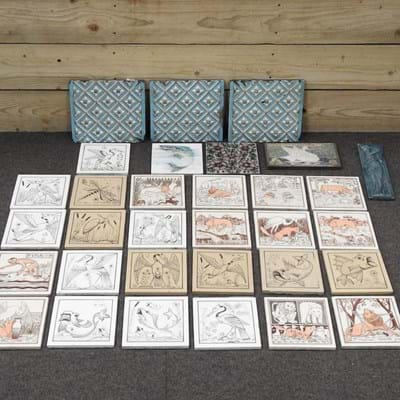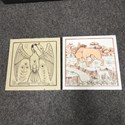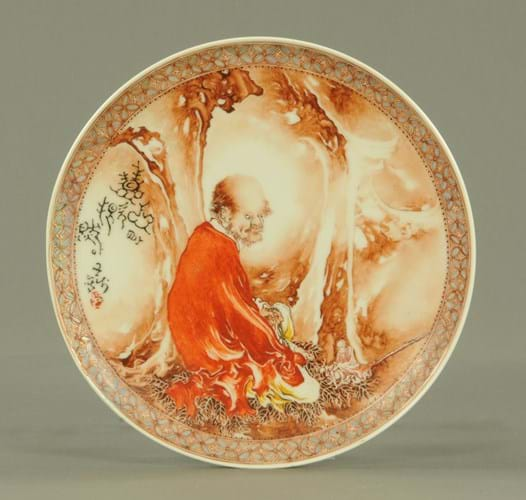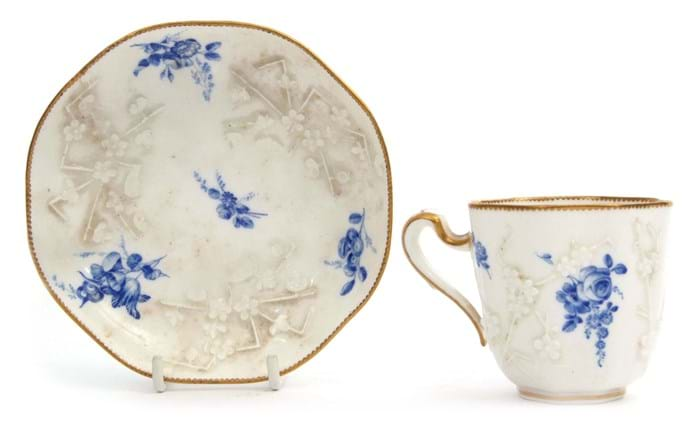1. Aesthetic tiles – £2900
Two mixed lots of Victorian dust-pressed tiles sold for multi-estimate sums at Mander Auctions in Sudbury on November 30. Key to their appeal were the inclusion of near sets of tiles made by Minton Hollins & Co to designs by important Arts & Crafts designers.
A job lot of more than 30 titles included 12 transfer printed and painted tiles c.1875 depicting various Aesop’s Fables. The designs (a series of 16) are traditionally attributed to Clement Heaton (1861-1940), the talented Arts and Crafts stained glass maker and architectural decorator whose career spanned decades in England, Switzerland and latterly the US.
Additional titles in the lot included a Minton fish tile from the 1930s, a William de Morgan pink Daisy pattern tile and a scarce series of black and white transfer printed designs depicting traditional Aesthetic movement motifs of dragonflies, water birds, fish and bulrushes. Undercooked at £50-70, they sold at £2900.
Another regular freelance contributor to Minton Hollins & Co was John Moyr Smith (1839-1912). A later lot in the sale including 10 tiles from the well-known set of 12 designed with subjects from Tennyson's Idylls of the King sold to an internet bidder for £1500 (estimate £50-70).
2. Lord Byron card case – £5000
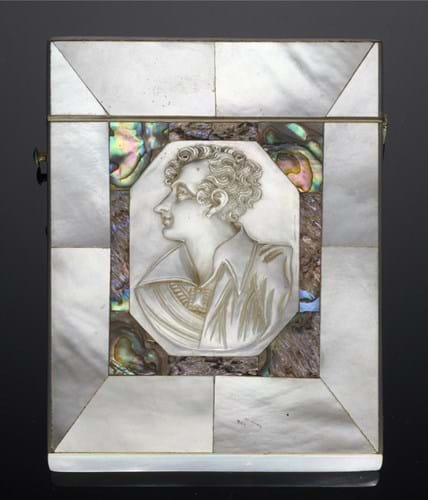
A mother-of-pearl and abalone shell card case carved with a portrait of Lord Byron – £5000 at Mellors & Kirk.
This Victorian mother-of-pearl and abalone shell card case is carved with a portrait of George Lord Byron, the most flamboyant and notorious of the major English Romantic poets.
The crisply carved image made in c.1840, a decade or more after Byron’s death, follows the profile portrait by Richard Westall that hangs in the National Portrait Gallery.
An object with great appeal to collectors of Byron memorabilia, it sold for a punchy £5000 (estimate £150-200) at Mellors & Kirk in Nottingham on November 27.
3. Wang Bu dish – £4500
Although not described as such in the catalogue, this 7½in (18cm) Republican period dish finely painted in enamels with a luohan resting under a tree was painted by a celebrated Jingdezhen decorator. Those who translated the signature and seal will have found the artist to be the celebrated Jingdezhen decorator Wang Bu (1898-1968).
It was his work in underglaze blue and white decoration, that earned him, in his later years, the title of qinghua dawang (the king of blue and white).
However, he created numerous works with overglaze enamels including those produced in the period both during and after the war with Japan when there was a scarcity of cobalt.
This dish, offered for sale at Mitchells in Cockermouth on November 27 with an estimate of £30-50, was not in perfect condition. There was a section of restoration across the left hand side rim that covered perhaps three small chips. Nevertheless it attracted multiple bidders before selling via thesaleroom.com for £4500.
Another plate, seemingly from the same series by the artist, sold for an unexpected £9500 at John Nicholson in Haslemere in April this year.
4. Japanese cloisonné vases – £16,000
Two lots of Japanese cloisonné – both by top-drawer Meiji workshops – generated sums way over estimate at a sale conducted by Thomas R Callan in Ayr on November 30.
A pair of 6in (15cm) ovoid vases and covers decorated with panels of birds to one side and butterflies to the other sold at £16,000 (estimate £200-300). One of the pair was in good condition, the other with some areas of loss and overpainting. Similar pieces are known bearing the mark of Namikawa Yasuyuki (1845–1927) of Kyoto.
Estimated at £120-180 but sold at £5000 was a 7in (18cm) high baluster form vase worked with doves and tress branches against a gloss black ground. Although not catalogued as such it carried the mark of Hayashi Kodenji (1831-1915) of Nagoya.
5. Masayuki netsuke – £4000
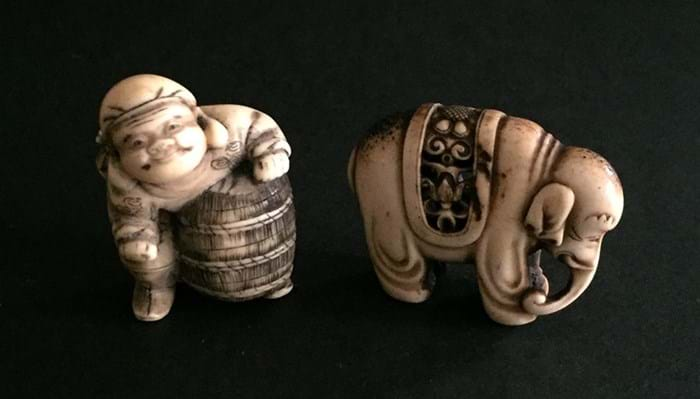
A carved netsuke of an elephant by Masayuki, a carver who worked in the Asakusa district of Tokyo in the second half of the 19th century – £4000 at Atkins.
Estimated at just £30-50, this carved stag antler netsuke of an elephant sold for £4000 at Atkins in Axminster on November 29.
This netsuke is signed Masayuki – one of a number of carvers who worked in the Asakusa district of Tokyo from about 1850 to the late 1890s. All strongly influenced by Kokusai, the master of this style, many of these netsuke are made from stag antler which, although difficult to carve, was a relatively inexpensive material and today has few of the shipping issues associated with ivory.
6. Vincennes cup and saucer – £5500
Although catalogued as Sèvres, this porcelain cup and saucer sold by Keys of Ayesham for an unexpected £5500 (estimate £100-200) on November 27 is by the factory’s precursor at Vincennes. The saucer has the date letter A for c.1754 and the cup B for c.1755.
A drawing for the shape, called ‘gobelet lizonné à relief’, is preserved in the factory archives. The decoration comprises relief moulded prunus branches (a common motif on Chinese porcelain) and blue floral sprays painted using a pigment developed by Jean Hellot (1685-1766), president of the Académie des Sciences, based on cobalt found in the Pyrenees.
The painter's mark H has traditionally been thought to stand for Pierre Houry (1725-55) who is first recorded at the factory in December 1746, as a ‘mouleur’ receiving 48 livres a month. In 1751 he is listed in the ‘Etat des frais’ as a ‘répareur’ earning 60 livres, increased to 66 livres in January 1754. By July 1754 he had become a flower painter, at the same salary.
Only a handful of similar gobelet lizonné à relief are known including another in the British Museum collection. Keys’ example has suffered from ‘fritting’ in the kiln and showed some areas of discolouration.


